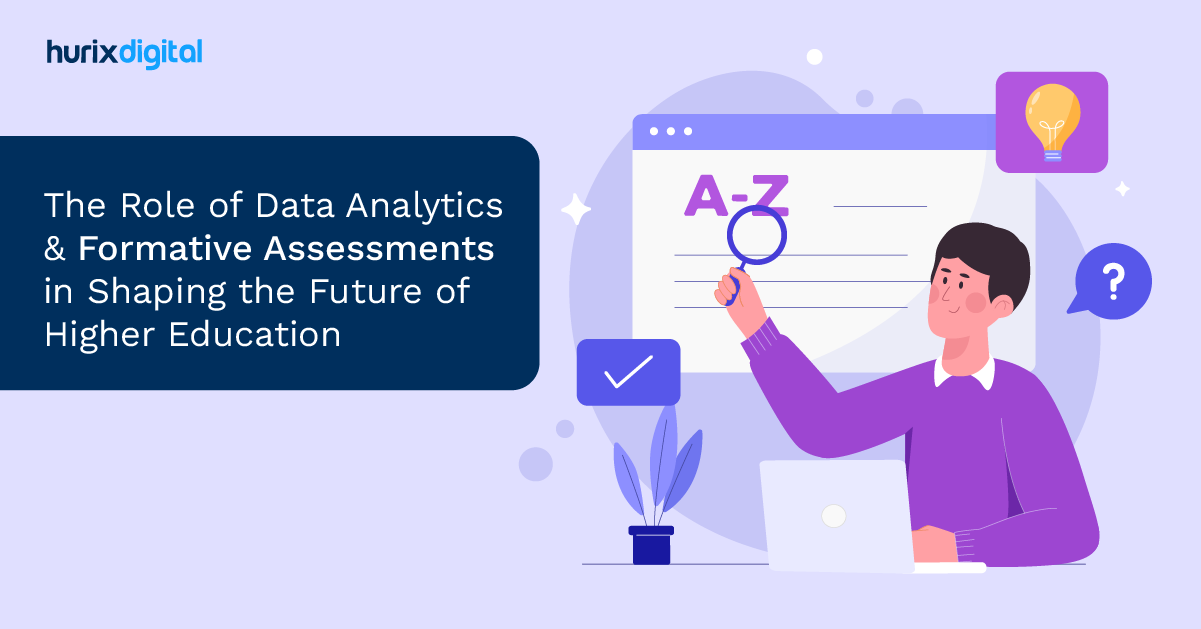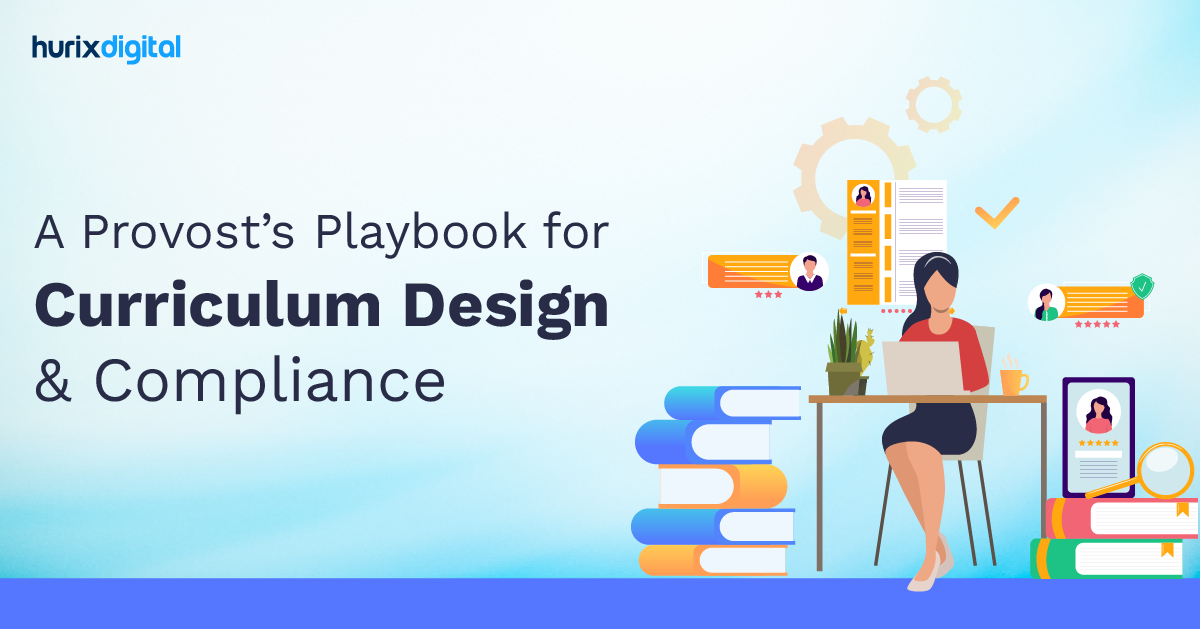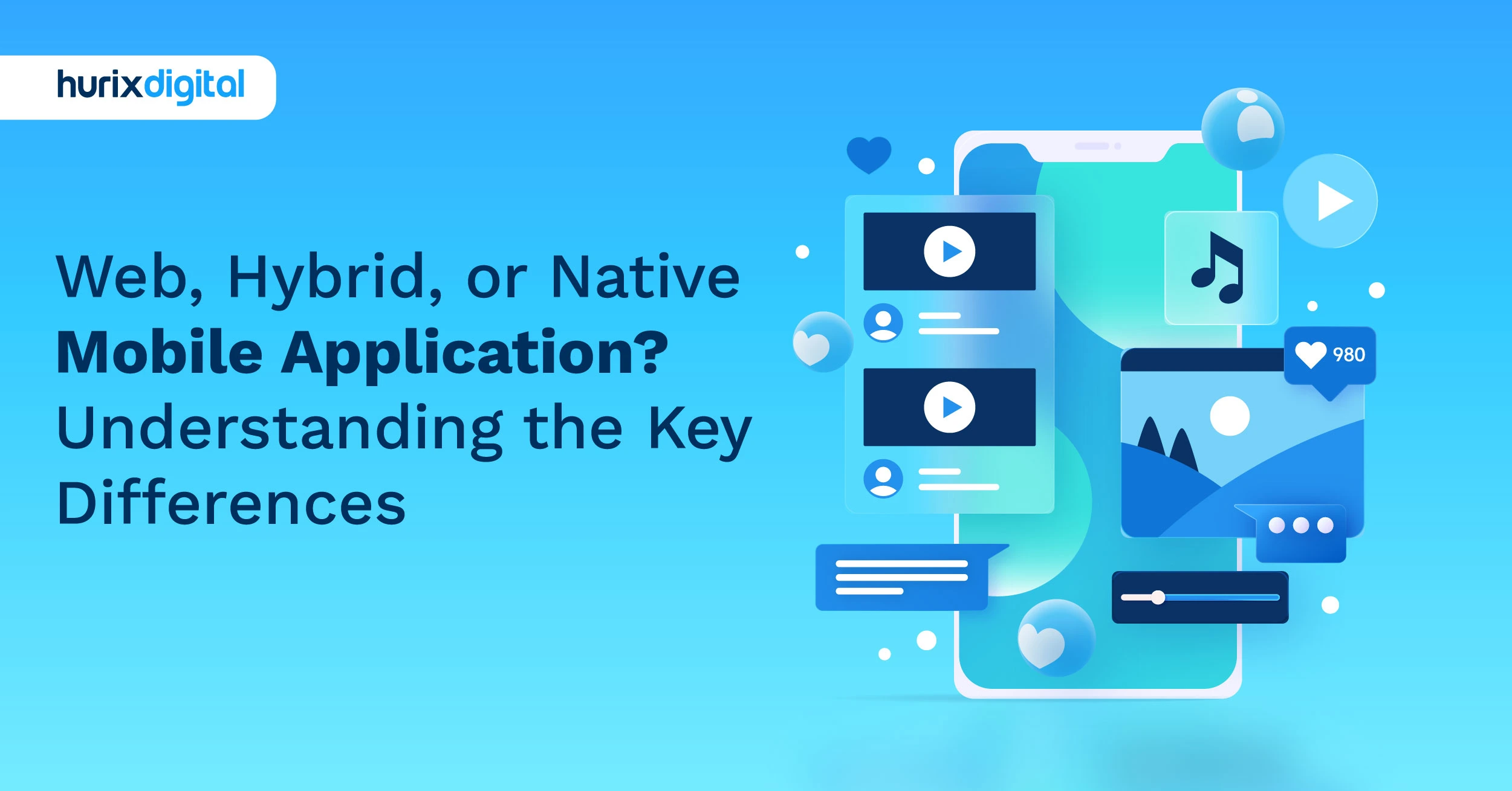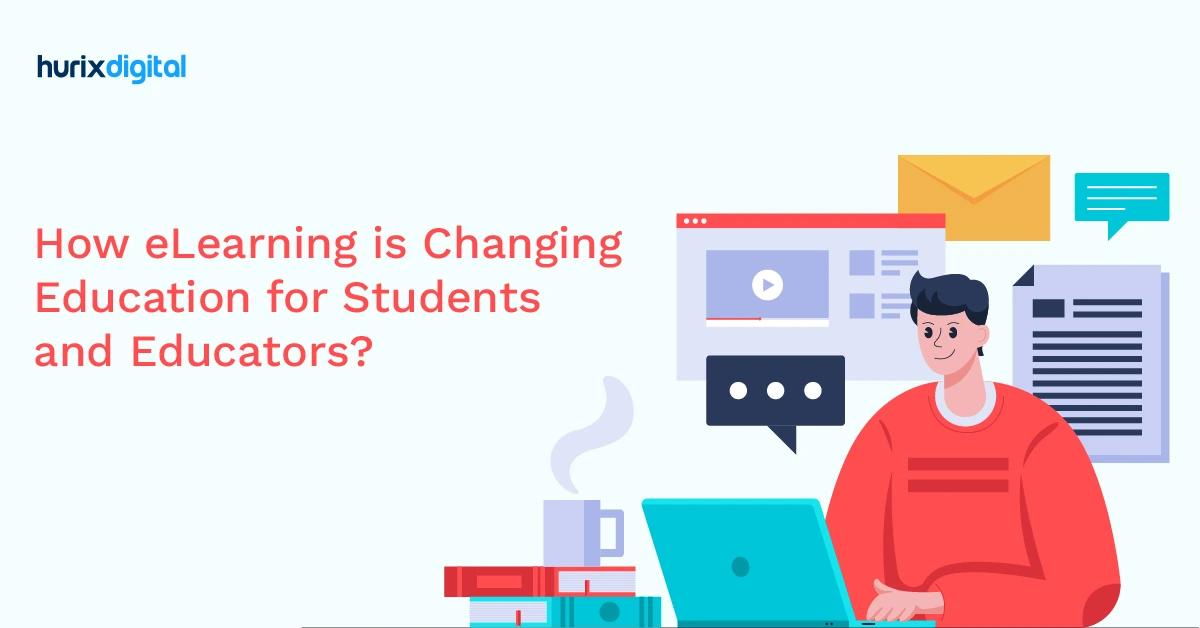
How eLearning is Changing Education for Students and Educators?
Summarize with:
eLearning is a learning system based on the use of electronic resources. It replaces face-to-face education and offers most of the benefits of increased accessibility, flexibility, and cost-effectiveness in higher education learning modules. This has made it a very rapidly sought-after mode of education during the pandemic.
Emerging trends in eLearning indicate an increasing impact on higher education, and the eLearning market is projected to grow by $325 billion by 2025.
Since eLearning has become an inseparable part of higher education, it is now important to know about the impact this kind of learning has begun having on students, educators, educators, and educational institutions. Check out the effects eLearning will have on the world of higher education!
Table of Contents:
- The 7 Key Challenges and Solutions
- What is the Impact of eLearning on Students?
- What is the Impact on Educators?
- What are the Impacts on Higher Education Institutions?
- Conclusion
The 7 Key Challenges and Solutions
A study by Learning House Inc. indicated that 37% of students who enrolled in both onsite and online courses felt their online experience was superior. Additionally, 87% felt it was either as good or better.

Going from there, let’s understand the challenges to online education and the eLearning solutions that can transform the learning experience.
1. Too Many Communication Channels
When most universities in higher education institutes went online in 2020, one of the biggest challenges they faced was that educators were using multiple communication channels. This included messaging apps and email, and video conferences to host live sessions, send notifications, and share resources. In addition, they faced multiple challenges, such as limited bandwidth, the inability to communicate with a larger number of learners effectively at one time, and the inability to store resources in one place.
A solution to this problem is that higher education providers can now leverage a single unified platform, which makes it easy to store, categorize, and share sources. In addition, it offers a seamless, superior experience to all stakeholders, such as learners, parents, guest lecturers, and educators, who can be easily onboarded on one platform.
2. Understanding Tough Concepts is a Challenge
Learners need to master the fundamentals of each subject. Sometimes, enhanced interactive resources are needed to supplement instructor-led lectures.
Higher education experts can create an immersive experience for learners by leveraging media such as animated videos, 3D learning, augmented reality, and virtual reality. This approach improves understanding and retention of concepts.
3. Lack of Hands-On Understanding
Textbooks offer conceptual knowledge, theories, and information across all subjects. However, learners also need skills and a deeper understanding.
E-learning enables them to get hands-on experience with simulated live projects. They can also work on the project as teams and build collaborative skills. A mix of domain, interpersonal, and communication skills is tested together.
For instance, students may be given a project where they need to apply a mathematical formula to solve a problem. They may first need to identify which formula to apply. They also need to use more than one formula at a time, thus making the experience both challenging and rewarding.
4. Lack of Revision
Learners need to continue practicing and revising to excel in their field. Many learners invest enough time and effort in revisions to end up with what they have already learned. However, eLearning applies gamification to the learning process.
This approach makes revision extremely addictive and nudges learners to revise regularly. They will receive notifications reminding them to practice daily. As they practice more and more, they also receive rewards, which adds incentive to the journey.
5. The Unaffordability of Physical Textbooks
The price of physical textbooks is continually going up. As a result, learners often end up buying second-hand books or accessing pirated copies. These books are extremely heavy to transport and difficult to store. However, in the last two or three years, more learners are adopting interactive eBooks, which deliver high value. In addition, learners can “listen” to the content of the books, thus reducing screen time.
They can highlight important pages, communicate with educators and fellow learners through comments, and instantly leverage the search function to locate information.
New-age eBooks come with interactive content in videos, audio presentations, and infographics. They also hyperlink to content outside of the eBook to enhance learning.
6. Lack of Data on Learner Engagement
Access to data offers educators insight into learners’ habits. From the early days, learning has always depended upon data insights as a guide to enhance the learning process. Data enables educators to understand which learning resources are most useful, how learners respond to gamification, which resources are least visited and need to be upgraded, what times of the day learners are logging in, and from which geography.
Educators can search for relevant data with customizable dashboards and receive insights within minutes.
7. Interactivity vs. Effectiveness
Too often, education providers cram a lot of interactive modules to help enhance the quality of learning. However, an excess of interactivity does not translate to effective learning.
It can sometimes be distracting, confusing, and time-consuming, but it may not translate into the learning outcomes that an education provider is looking to drive.
The impact of eLearning ultimately lies in the ability of learners to absorb and retain knowledge and build skills. Hence, a thorough understanding of learning needs and outcomes must dictate the shift toward e-learning.
What is the Impact of eLearning on Students?
eLearning provides students with numerous benefits, including changing how they learn and interact with learning content. Let’s discuss the specific ways eLearning benefits students.
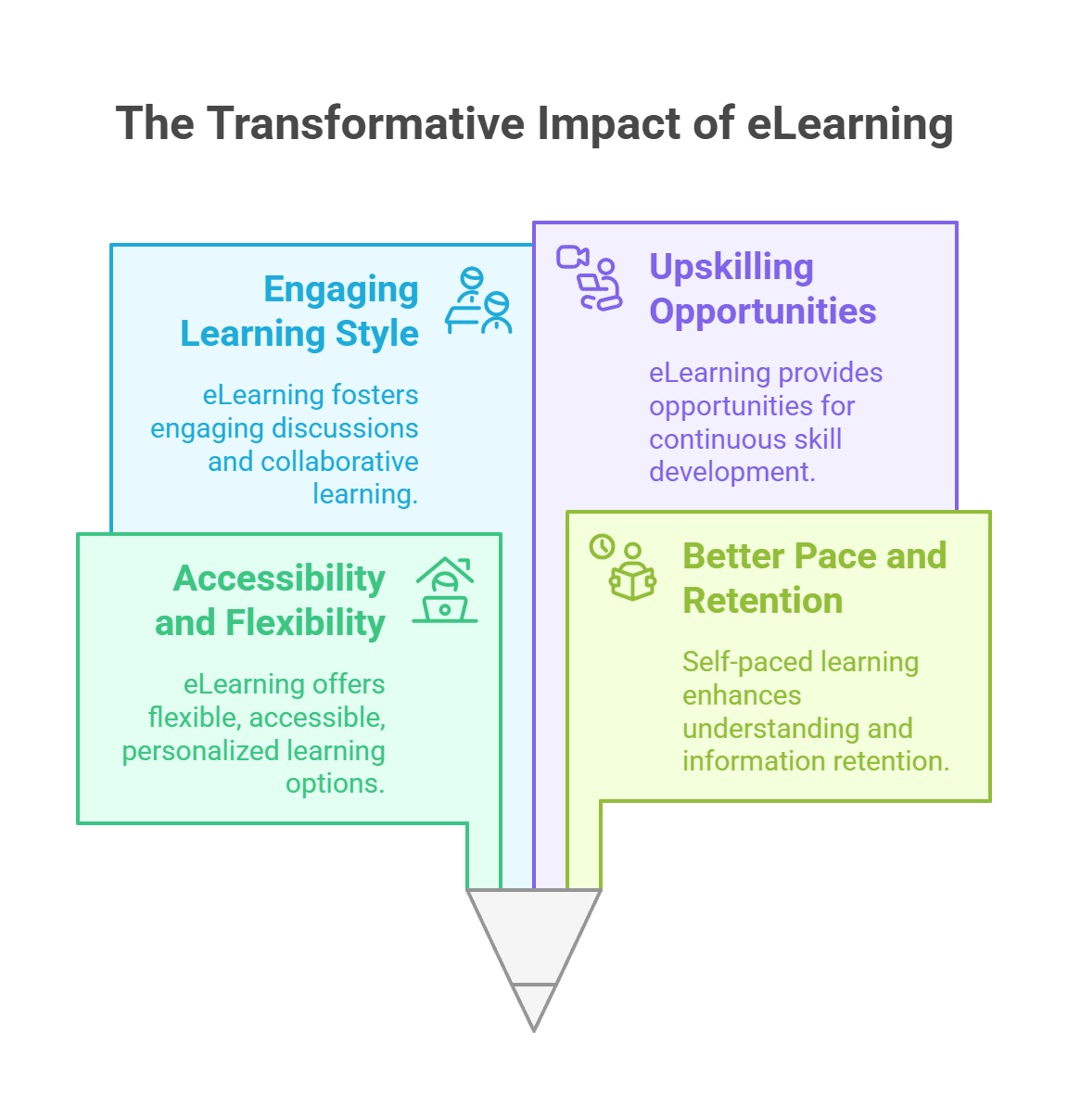
1. Greater Accessibility and Flexibility
Advantages, such as flexibility, accessibility, and personalized learning, have made online learning possible for some students, especially disabled students, to learn at home. It has also increased education in remote areas among students.
Unlike traditional education, where students have to attend classes, students will not be moving to a whole new state or even a different country to study at this point. They can connect their lectures at any time that suits them or their preferred locations.
Moreover, it allows students to work part-time, indulge in their hobbies, or improve their skills.
2. Better Pace and Retention
In traditional education, there is increased peer pressure to understand what is taught in a lecture and perform well in examinations.
Fortunately, eLearning allows students to learn at a convenient pace without having to worry about peer pressure. Self-paced learning helps students understand their concepts clearly and, in turn, builds their confidence.
Besides this, eLearning can help students retain information better by increasing their retention rates to about 25%–60% from 8%–10%. Thus, it can aid them in remembering relevant information for a long time and achieving their examinations.
3. Engaging Style of Learning
Contrary to popular belief, eLearning in higher education can provide an engaging learning experience for students. In eLearning mode, students find it easier to participate in discussions about a topic, as eLearning more than takes away the fear associated with public speaking.
Moreover, students can readily collaborate with their peers to create something innovative or solve a problem creatively. They can also contact their professors for doubt clarification and receive responses quickly. Thus, eLearning increases the opportunity for students to interact with their peers and professors and consequently improves their communication skills.
4. Plenty of Upskilling Opportunities
Nowadays, many jobs require candidates to possess a particular set of skills in addition to academic knowledge. Thanks to the flexibility of eLearning, students can become job-fit while pursuing their graduate or postgraduate studies.
In an eLearning scenario, students can pursue other courses besides their degree courses online to hone their existing skills or gain a new skill. Constant upskilling increases students’ technical knowledge and enables them to stay ahead of the competition.
What is the Impact on Educators?
eLearning offers multiple advantages for educators, streamlining their teaching practices and enhancing the overall learning experience. Now, let us explore the distinct impact of eLearning on educators.

1. Better-Structured and Immersive Course
eLearning in higher education has enabled professors to structure their courses to meet students’ learning needs. Now, they can impart information about a concept through multimedia, such as images and animations.
They can explain complex topics simply using bite-sized videos and game-based learning. They can also share links for additional educational material with students. All this enables professors to create an immersive learning environment for students, making it easy for students to gain a strong hold over the concepts in their courses.
2. Provision of Good Assessments and Feedback
The eLearning mode of education enables professors to create a variety of assessments for students. Professors can curate regular class assessments and independent chapter assessments through quizzes, case studies, etc.
Through consistent evaluation, they can keep track of every student’s progress and provide valuable feedback about performance with improvement tips. In addition, since eLearning enables professors to remain readily available, they can resolve students’ queries whenever they pop up.
Alternatively, they can hold independent or group doubt-clarifying sessions depending on students’ needs. This way, they can provide a personalized learning experience.
What are the Impacts on Higher Education Institutions?
eLearning offers many advantages to higher education institutions, from improving operational efficiency to academic excellence. Now, let us examine the broader effects of eLearning on the institution.

1. Growth in Enrollment
Even after the pandemic, 73% of US students have shown interest in taking online classes. Owing to this high proportionate interest, higher education institutions will continue to see an increase in the enrollment of students in online courses from the US.
If educational institutions keep offering general and specific education courses online, they can eventually become a major source of attraction for international students.
As a result, educational institutions’ reach will expand across borders, enrollment of international students in online learning courses will increase, and this will lead to the cultivation of a diverse online classroom environment.
2. Helps Save Resources and the Environment
Creating eLearning courses is a one-time investment and saves educational institutions from the hassle of arranging for infrastructural, physical, and human resources.
Unlike traditional courses, where teaching takes place on campus, eLearning courses use 90% less energy and emit 85% less CO2, thus significantly reducing educational institutions’ carbon footprint.
Hence, implementing eLearning saves educational institutions from the cost of unnecessary resources and aids in providing an eco-friendly medium of education.
3. Enhances Reputation
eLearning in higher education institutions enables them to gain a good reputation due to their provision of flexible online courses. If they continue to improve their instruction pedagogy and introduce new online programs without compromising on the quality of education and accommodating the diverse needs of students, they can help enhance their reputation.
Higher-ed institutions can stand out from the competition and garner an enhanced reputation internationally by leveraging technological advancements to provide accessible, good-quality education to students.
Conclusion
Among many others, the main reasons why eLearning is highly effective are flexibility in the learning environment, personalized instruction, and instant feedback. Due to its transformative power for students, teachers, and institutions, integrating eLearning strategies into higher education becomes inevitable.
The process of introducing new technologies into educational institutions can be a time-consuming and rather complicated one.
Therefore, outsourcing these services to a company like Hurix Digital can streamline the implementation process and ensure a smooth transition. Our platform offers comprehensive course development services, from curriculum design to media production.
Learn more about how our team can elevate your educational offerings.
Frequently Asked Questions (FAQs)
Q1: How has teaching roles evolved with eLearning?
A1: Educators now serve as facilitators and coaches, guiding personalized learning through online platforms.
Q2: Can eLearning support special education needs?
A2: Yes—adaptive tools, closed captions, and interactive content improve accessibility for diverse learners.
Q3: How do students benefit from self-paced eLearning?
A3: It allows learners to progress at their own speed, reinforcing understanding and reducing pressure.
Q4: Does eLearning aid collaboration?
A4: With forums, group projects, and peer reviews, eLearning fosters online community learning and interaction.
Q5: How are educators trained for eLearning delivery?
A5: Through workshops, instructional design courses, and hands-on experience with platforms and tools.
Summarize with:

Senior Vice President – Business Development
at Hurix Digital, with over 25 years of experience in EdTech and workforce learning. He excels in business development, customer relationship management, and scaling digital learning solutions, driving global growth through innovative content, simulations, and AI‑driven training offerings
 Upcoming Masterclass | Build an Army of Brand Evangelists using Training & Development | November 6th, 8am PT | 9PM IST |
Upcoming Masterclass | Build an Army of Brand Evangelists using Training & Development | November 6th, 8am PT | 9PM IST |

